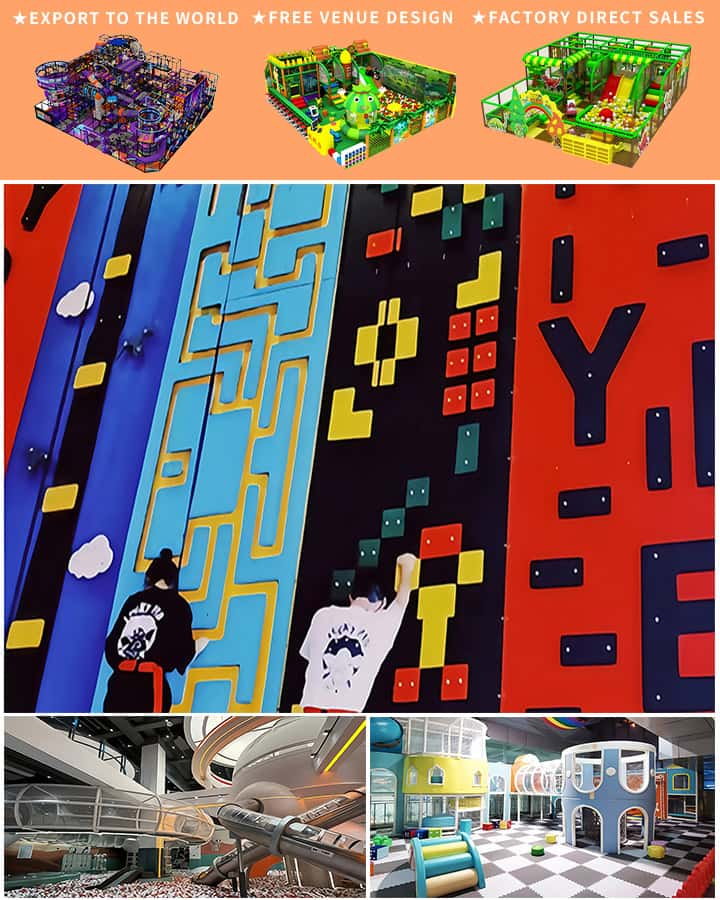As children grow older, their need for physical activity and imaginative play becomes even more crucial. An indoor play area tailored for bigger kids can be the perfect solution to ensure they remain active, engaged, and entertained, regardless of the weather or time of day. Here’s a comprehensive guide to creating an indoor play area that bigger kids will love and benefit from.
Planning the Perfect Space
1. Assess Available Space: Start by identifying a suitable space within your home that can accommodate an indoor play area. Larger rooms like basements, attics, or even living room corners can be transformed into a fun and safe play environment. Consider the dimensions and layout to maximize usability.
2. Safety First: Safety is paramount when designing an indoor play area for bigger kids. Ensure the space is free from potential hazards such as sharp edges, electrical outlets, and choking hazards. Use non-toxic materials and secure any furniture or equipment that could tip over.
3. Multi-Functional Design: Bigger kids often have diverse interests, ranging from sports and physical activities to arts and crafts. A multi-functional design allows for various types of play. Incorporate elements like climbing walls, mini basketball hoops, arts and crafts stations, and cozy reading nooks.
Essential Features of an Indoor Play Area
1. Climbing Walls and Play Structures:
 Climbing walls and play structures are excellent for promoting physical fitness and developing motor skills. They offer a fun way for bigger kids to expend energy and challenge themselves physically.
Climbing walls and play structures are excellent for promoting physical fitness and developing motor skills. They offer a fun way for bigger kids to expend energy and challenge themselves physically.
2. Sports Areas: Setting up mini basketball hoops, soccer goals, or even a table for ping pong can cater to the budding athletes in your home. These activities not only promote physical health but also foster teamwork and competitive spirit.
3. Arts and Crafts Corner: A dedicated space for arts and crafts encourages creativity and imaginative play. Stock this area with supplies such as markers, paints, clay, and construction paper. This corner provides a quiet retreat where kids can express themselves artistically.
4. Cozy Reading Nook: A comfortable reading nook creates a peaceful haven for kids who enjoy books. Include a variety of age-appropriate books, soft cushions, and good lighting. This area can also double as a quiet spot for relaxation and downtime.
Adding Extra Fun
1. Interactive Games and Puzzles: Interactive games and puzzles can stimulate cognitive development and problem-solving skills. Consider adding large floor puzzles, board games, or educational toys that challenge the mind while providing entertainment.
2. Music and Dance Area: A small space dedicated to music and dance allows kids to explore their rhythmic abilities and creativity. Include instruments, a sound system, and space for dancing.
3. Themed Decor: Decorate the play area with themes that interest your kids, whether it’s a jungle, underwater adventure, or outer space. Themed decor adds excitement and immersion to their play experience.
Maintaining the Play Area
1. Regular Cleaning: To keep the play area hygienic and enjoyable, establish a regular cleaning routine. Wipe down surfaces, vacuum the floor, and organize toys and supplies regularly.
2. Rotating Toys and Equipment: Rotate toys and equipment periodically to maintain novelty and reduce clutter. Store items that are not in use and bring them out as a refreshing change every few weeks.
3. Supervision: While older kids may need less supervision than younger ones, it’s still essential to monitor their activity to ensure safety and intervene if necessary.
Conclusion
Creating an indoor play area for bigger kids is a fantastic way to provide a space where they can learn, grow, and most importantly, have fun. By considering their diverse needs and interests, you can design a versatile and engaging environment that keeps them happily occupied for hours on end. So gather your tools, unleash your creativity, and get ready to transform part of your home into an indoor paradise for your bigger kids!




